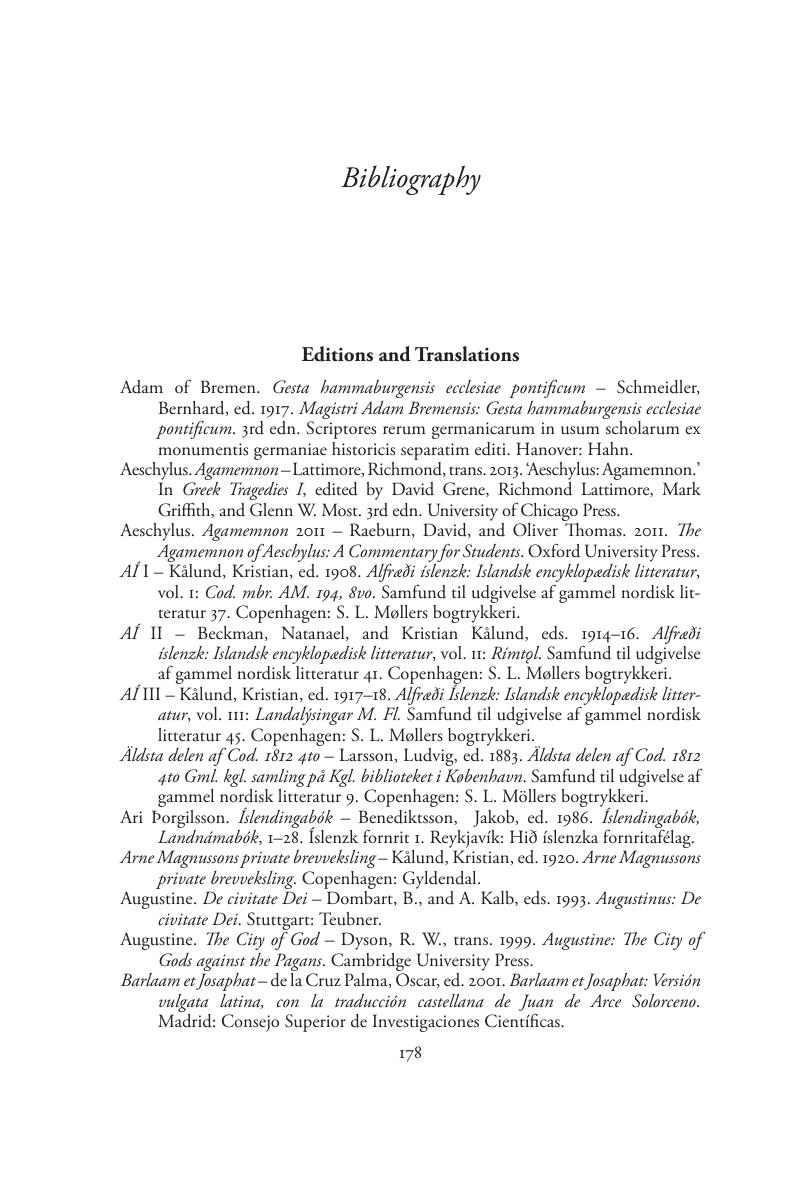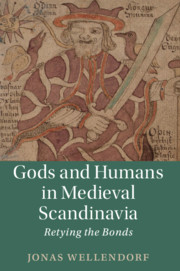Book contents
- Gods and Humans in Medieval Scandinavia
- Cambridge Studies in Medieval Literature
- Gods and Humans in Medieval Scandinavia
- Copyright page
- Epigraph
- Contents
- Illustrations
- Acknowledgments
- Chapter 1 Retying the Bonds
- Chapter 2 The Hierarchy of Disbeliefs in Antipagan Polemics
- Chapter 3 Universalist Aspirations in Hauksbók
- Chapter 4 The Byzantine Gods of Saxo Grammaticus
- Chapter 5 Gods and Humans in the Prose Edda
- Epilogue: Óðinn and Odysseus
- Notes
- Bibliography
- Index
- Cambridge Studies in Medieval Literature
- References
Bibliography
Published online by Cambridge University Press: 23 March 2018
- Gods and Humans in Medieval Scandinavia
- Cambridge Studies in Medieval Literature
- Gods and Humans in Medieval Scandinavia
- Copyright page
- Epigraph
- Contents
- Illustrations
- Acknowledgments
- Chapter 1 Retying the Bonds
- Chapter 2 The Hierarchy of Disbeliefs in Antipagan Polemics
- Chapter 3 Universalist Aspirations in Hauksbók
- Chapter 4 The Byzantine Gods of Saxo Grammaticus
- Chapter 5 Gods and Humans in the Prose Edda
- Epilogue: Óðinn and Odysseus
- Notes
- Bibliography
- Index
- Cambridge Studies in Medieval Literature
- References
Summary

- Type
- Chapter
- Information
- Gods and Humans in Medieval ScandinaviaRetying the Bonds, pp. 178 - 199Publisher: Cambridge University PressPrint publication year: 2018



